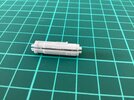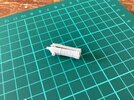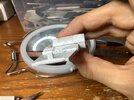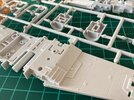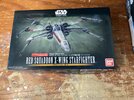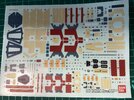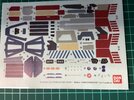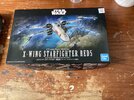There are 5 major groups of 'attention areas' to watch out for.
1. Each of the engines has a seam.
2. Each of the guns has a seam.
3. The gun tips should be drilled out so that they don't look like solid rods. I drilled in approximately 1 mm for each tip.
4. Each of the engine intake cowls has a seam when assembled. They are easily corrected with putty.
Item 1 and 2 are difficult to correct because the parts are small and there are tiny features in the way. I ended up putting on multiple coat of Tamiya extra thin cement to 'anneal' the seams. Then using an exacto to scrap the seams flat. Finally I used some fine sandpapers held in tweezers to sand the areas flush.
5. The wings have ejector pin marks. They are somewhat hard to see, so look for them carefully. I simply filed them down.
There is a 6th area that is optionally worth correcting. The canopy comes in 2 pieces. I found that no matter what I do, the gap between them is big enough to let through light. I solved this by gluing the two pieces together with canopy glue and carefully filling the gap on the inside with canopy glue. Once dried, I carefully painted in an opaque layer of paint (on the inside seam) to stop the light leakage. This is a delicate operation because there isn't much room for a big glop of canopy glue.
